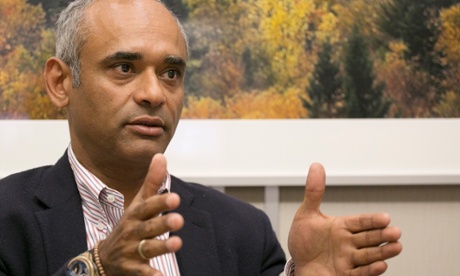
The US supreme court is hearing a case on Tuesday brought by US networks against Aereo, a startup company that wants to change the way Americans watch TV.
What is Aereo?
The two-year-old company, backed by media mogul Barry Diller, transmits broadcasters’ shows via tiny antennae. Subscribers access programming with computers, smartphones and other devices, as well as with TVs with Roku or Apple TV streaming devices.
Aereo has huge arrays of TV antennae – at least one for every user of its service – and so claims it's not publicly reshowing broadcasters' copyright content. By this characterisation, Aereo is essentially a TVR, with the cloud used instead of the cable to your TV set. The networks, of course, see it differently.
Customers pay between $8 and $12 a month for the service, which includes a cloud-based digital video recorder, far less than the average cable bill.
The company, backed by Diller's IAC, does not pay fees to the media companies whose programmes it redistributes. Aereo, which launched in March 2012 in the New York area and now serves 10 other markets, says that because it assigns small antennae to each customer it is not in breach of the law.
What are broadcast and cable companies afraid of?
Big media companies including Disney, CBS, NBC and PBS and News Corp argue that the service is illegal.
Aereo resembles a cable or satellite TV service, except it costs less and is limited to over-the-air channels, plus Bloomberg TV. Cable and satellite TV companies typically pay broadcasters to include TV stations on customers' lineups. Aereo argues it's exempt because it merely relays free signals. Broadcasters argue that the many tiny antennae are helping the company skirt copyright law.
"This case is not about stifling new video distribution technologies, but about stopping a company from violating our copyrights and redistributing our television programming without permission or compensation," the media firms said in a statement last year.
Millions of dollars are at stake here: if people ditch cable service for Aereo, broadcasters would be able to charge cable companies less.
How did we get to the supreme court?
Last April, by a vote of two to one, a federal appeals court rejected the media company's attempt to force Aereo to cease operations. It was the companies' second court loss in a row and came the same week the second circuit in New York ruled Monday that the redistribution did not constitute "public performances," and copyright lawsuits against the service were "not likely to prevail on the merits."
That court cited the case of Cablevision, which won the right to create a cloud-based digital video recorder for its customers in 2008. But one dissenting judge, Denny Chin, called Aereo's technology "a sham". Chin wrote that the company was using a multitude of antennas in order to take advantage of "a perceived loophole in the law."
What happens if Aereo wins?
Some over-the-air broadcasters have threatened to go cable-only so Aereo's antennae can't access them – and neither can TV viewers without a cable subscription.
Aereo founder Chet Kanojia told the Associated Press that change is inevitable:
"What is happening is the entire market base is changing with access to alternatives, whether it's Netflix or iTunes or things like that. Aereo is simply providing a piece of the puzzle. After we win, it's not that a sea change is going to happen overnight. It is just going to be that we will be allowed to continue to fit that missing piece in a consumer's life as they're evolving. These things take decades to play out."
What happens if Aereo loses?
"We don't have a Plan B," Kanojia said.
Haven't we been here before?
Yes. In 1984, the supreme court ruled five to four that consumers' use of VCRs to record TV shows was legal. Back then, the broadcasters argued that tape-delays were a misuse of their signals, much the same way Aereo's tiny antennae are thought to be by some today.
There have also been cases about what counts as public retransmission (and so incurs fees). These have found, for example, that letting a restaurant letting customers listen to the owner's radio is fine, but a hotel placing a radio in every room fed by central antennae, is not.

